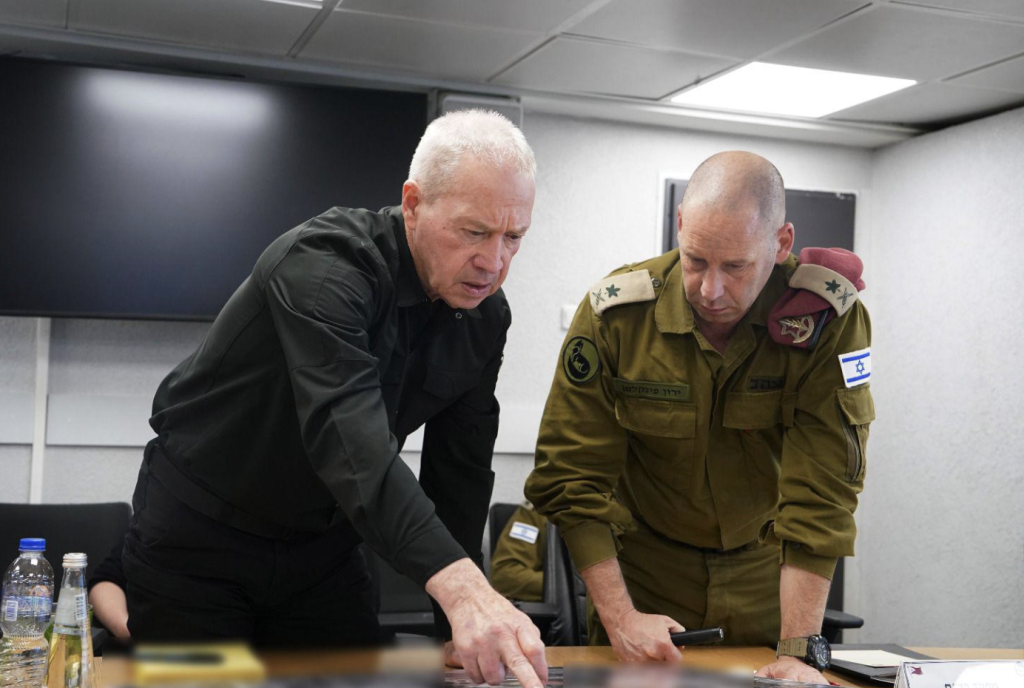
In a field in Israel, not far from the Gaza border, dozens of Merkava IV tanks and a coterie of other armored vehicles lined up on April 7. They were part of the 98th division and the 7th armored brigade that had been fighting in Khan Younis since December. Israel has withdrawn these key units from Gaza in the last week. The shift in forces came on the six-month mark of the October 7 attack on Israel by Hamas. Israel’s move has raised eyebrows because the shift is not a redeployment or rotation of forces. Khan Younis is the hometown of Hamas leader Yahya Sinwar and was festooned with Hamas tunnels. By wrapping up operations and leaving the city, Israel is conducting the same campaign it did in urban areas of northern Gaza.
“The withdrawal of troops from Khan Younis was carried out once Hamas ceased to exist as a military framework in the city. Our forces left the area in order to prepare for their future missions, including their mission in Rafah,” Israel’s Minister of Defense Yoav Gallant said in a briefing at the IDF’s Southern Command, on April 7. Gallant received a status update on operational activities in and around Khan Younis, and his office said he was also briefed on “operational preparations for the destruction of Hamas’ Rafah Brigade.” This is supposed to complete the work of “dismantling of Hamas as a military authority in Gaza,” Gallant’s office noted in a statement about his visit to Southern Command.
The 98th division entered Khan Younis in December and used commandos and paratroopers backed by infantry and tanks to clear the city in a slow, methodical way. The IDF operated street-by-street, neighborhood-by-neighborhood, fanning out and around the sprawling city. The IDF also moved into other neighborhoods, like Amal. It went into some areas more than once to clear them. At the Qatari-funded Hamad towers, the IDF used special forces to sweep the suburban neighborhood’s modern residential towers. In essence, the war in Khan Younis was supposed to be a contrast to the more intense fighting in areas such as Jabalya and Shujaiya near Gaza City.
“I have recently completed a situation assessment at the IDF’s Southern Commander, as forces exit the area of Khan Younis. The achievements made by the IDF’s Division 98 and its units, are extremely impressive. They have eliminated terrorists and destroyed terror targets including warehouses, weapons, headquarters, communication centers and more. Their activities enabled the dismantling of Hamas as a functioning military unit in this area,” Gallant said.
The 98th division’s accomplishments under its commander Brig. Gen. Dan Goldfus are well-documented. Goldfus provided an overview of the number of both terrorists and terror battalions eliminated in a briefing in mid-March. He is known for characterizing the battle in Khan Younis as a “720 degree” fight against an enemy that is underground and above-ground.
However, the decision to withdraw the whole division, rather than rotate units into Khan Younis and bring out the commandos and 7th armored for rest, has led to questions about what comes next. Gallant says the mission was accomplished in the area. This has become Israel’s tactic in Gaza, clearing an area and then leaving. Hamas has regrouped each time Israel left an area. For instance, recent raids into Shati, Zaytun and Shifa have been similar with a quick movement of troops in, fighting terrorists and leaving. This appears to leave some terrorists behind. Even as the 98th was leaving, four Israeli commandos were killed, bringing the total IDF soldiers killed in six months of fighting to 604 soldiers, 260 killed since ground operations began. The IDF also said it found a tunnel stretching 900 meters in the days before the troops left. This appears to suggest that tunnel threats remain, because four commandos were recently killed when terrorists exited a tunnel.
Israel continues to say it is ready for any threat that may emerge, including from Iran. Arabic language media in the UAE and Iranian pro-government media have both reported on Israel’s withdrawal from Khan Younis, illustrating how closely the battle there and its aftermath are being watched around the region.







